Projekte
| Acronym (Funding) | Research Area/ Project | Research Focus | Project Period |
|---|---|---|---|
| NECO (BMBF) | Natural hazards and response of the marine ecosystem - causal relationship and predictability | Climate patterns leading to natural hazards (WP3) and Recommendations for socio-political action plans (WP4) | 2023-2026 |
| CCEHN (Lower Saxony MWK and VolkswagenStiftung) | Climate Change and Early Humans in the North | Exploring past human-environment-climate relationships; socio-behavioural responses to climatic and environmental shifts | 2023-2026 |
| AutoCoast (HGF) | Helmholtz Imaging Platform (HIP) | Automatic detection of coastline change and causal linkage with natural and human drivers | 2023-2026 |
| SCENIC (HGF) | Storyline Scenarios of Extreme Weather, Climate, and Environmental Events along with their Impacts in a Warmer World | Novel storyline approach for extreme events in future scenarios compared to present and pre-industrial climates | 2022-2024 |
| CLINT (EU H2020) | CLImate INTelligence: extreme events detection, attribution and adaptation design using machine learning | Detection of Extreme Events (WP3) and Causation Analysis (WP4) | 2021-2025 |
| CliCCS (DFG) | Cluster of Excellence -Climate, Climate Change and Society | Earth System Variability and Predictability in a Changing Climate (A6) | 2019-2026 |
bis 2022
| Acronym (Funding) | Research Area/ Project | Research Focus | Project Period |
|---|---|---|---|
| HI-CAM (HGF) | Helmholtz Climate Inititative | Storylines of plausible future climates for recent extreme events | 2019-2021 |
| PalMod II (BMBF) | From the last interglacial to the anthropocene: modelling a complete glacial cycle | Data management & Probabilistic model-data comparison (CC-2-TP2) | 2019-2022 |
| CASISAC (BMBF) | Changes in the Agulhas System and its Impact on Southern African Coasts | Regional atmosphere modeling and precipitation changes | 2018-2022 |
| PALEOLINK (PAGES) | past global changes of the last 2000 years (2k Network) | Bridging the scale gap between Earth System Models and climate reconstructions | 2018-2019 |
| SeaLevel-ISSI (ISSI) | Towards a Unified Sea Level Record | Assessing the Performance of Global Mean Sea Level Reconstructions from Satellite Altimetry, Tide Gauges, Paleo-Proxies and Geophysical Models | 2017-2019 |
| Past2K (HGF PACES2) | Climate during the past two millenia | Decadal Predictability of European Climate and the Contribution of Ocean Dynamics | 2017-2020 |
| RedMod (HGF Impuls- und Vernetzungsfond) | Information and Data Science -Reduced Complexity Models | Reconstruction 4-d climate information from patchy and uncertain information | 2017-2021 |
| PACMEDY (JPI-Climate/Belmont/BMBF) | PAlaeo-Constraints on Monsoon Evolution and Dynamics | The Holocene Evolution of Upwelling Regimes | 2016-2020 |
| Asia-Floods (DFG) | Regional Sea Level Change and Society (SPP 1889) | Extreme sea-level events along South-East Asian coast: past, present and future | 2016-2019 |
| PALMOD (BMBF) | From the last interglacial to the anthropocene: modelling a complete glacial cycle | Paleodata synthesis tools and concepts (WP3.1) | 2015-2018 |
2011 - 2017
| Acronym (Funding) | Research Area/ Project | Research Focus | funding period |
|---|---|---|---|
| PRIME-2 (DFG) | Integrated Analysis of Interglacial Climate Dynamics INTERDYNAMIC (SPP 1266) | Precipitation in the past millennia in Europe -Extension back to Roman times | 2011-2017 |
| ARAMACC (EU) | Annually resolved archives of marine climate change | The use of proxy data from molluscan sclerochronology for model comparison and decadal prediction | 2013-2017 |
| Ghana-SL (DAAD) | Coastal Inundation and Adaptation to climate change: Assessing the retreating coast of Ghana | Regional sea level under a changing climate at the retreating coast of Ghana | 2013-2017 |
| CliSAP2-A3 (DFG) | Climate Sensitivity and Sea Level | Long-term sea-level variability and change in the Baltic Sea | 2013-2017 |
| AFICHE (DFG) | Attribution of Forced and internal Chinese climate variability in the Common era | 2013-2016 | |
| CliSAP2-B3 (DFG) | Marine and coastal systems | Impact of large scale climate variability on coastal upwelling | 2013-2016 |
| GENUS II (BMBF) | Geochemistry and Ecology of the Namibian Upwelling System | Influence of large-scale climate variability on upwelling regimes off the Namibian coast: implications for past and future climates | 2012-2016 |
| REKLIM (HGF) | Abrupt climate change derived from Proxy data (Topic 8): Climate Signals in Coastal Deposits | Long-Term changes of large-scale processes with relevance for the south-western Baltic coastline | 2011-2016 |
| PRIME-2 (DFG) | Integrated Analysis of Interglacial Climate Dynamics INTERDYNAMIC (SPP 1266) | Precipitation in the past millennia in Europe -Extension back to Roman times | 2011-2014 |
| SINOMA (DFG) | Integrated Climate System Analysis and Prediction (CLISAP) Cluster of Excellence | SINOMA - A new approach for estimating linear relationships between noisy serial data streams | 2011-2014 |
| HAMBURG-2k (DFG) | Integrated Climate System Analysis and Prediction (CLISAP) Cluster of Excellence | Climate scenarios for the region of Hamburg under a global 2-degree warming | 2010-2012 |
| PLUSDATA (DFG) | Integrated Climate System Analysis and Prediction (CLISAP) Cluster of Excellence | Plußsee long-term data acquisition and analysis | 2009-2012 |
| ECOSUPPORT (EU-BMBF) | Advanced modeling tool for scenarios of the Baltic Sea ECOsystem to SUPPORT decision making | Drivers related to changing climate and changing river- and airborne nutrient loadings due to anthropogenic activities | 2009-2011 |
| PRIME (DFG) | Integrated Analysis of Interglacial Climate Dynamics INTERDYNAMIC (SPP 1266) | Precipitation in the past millennia in Europe | 2010-2011 |
| MILLENNIUM European Climate (EU) | European Climate of the last millennium | 2006-2011 | |
before 2011
REGCLIMOSS (DFG): Regional climate modelling in southern South America for the Holocene and the 21st century (2008-2009)
SINCOS-2 (DFG): Relationships between Baltic Sea level variations and periods of rapid climate change in the Holocene as analogues for future changes (2007-2009)
FIRME (CICYT Spain): Frenquency and intensity of heavy precipitations in Mediterranean Spain within a modified climate
RAMSHES (CICYT Spain): Regional Atmospheric Models in the Simulation of Hydric Extremes
ALPIMP (BMBF/ DEKLIM): An integrated research attempt on the unique Alpine instrumental and proxy data potential
EEM (BMBF/ DEKLIM): Climate Change at the end of the Eemian warm period
SINCOS (DFG): Sinking coasts -Climate related sea-level variations in the Baltic Sea in the last few thousand years
SOAP (EU): Simulations, Observations and Palaeodata -climate variability over the last 500 years
CORCLIM (BMBF/ DEKLIM): Coral climate history of the subtropical North Atlantic - High resolution proxy records from Bermuda
DATUN (BMBF/ DEKLIM): Reconstructing the European climate for the instrumental period by means of Data Assimilation through Upscaling and Nudging
IBSEN (BMBF/ DEKLIM): Integrated Baltic Sea Environmental Study
KIHZ (HGF): Natural climate variability in historical times
Long-Term changes of large-scale processes with relevance for the south-western Baltic coastline
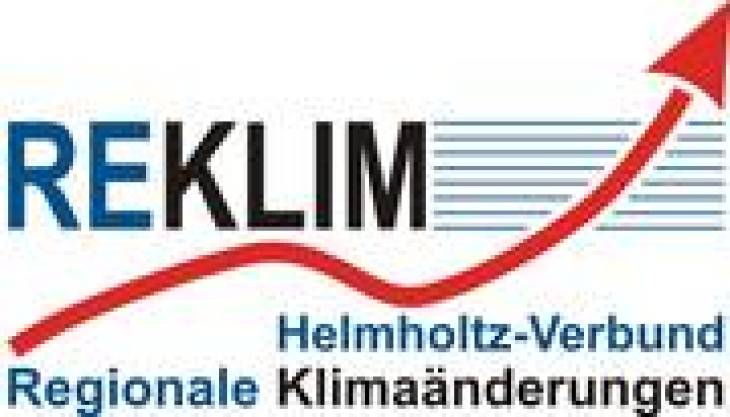
The aim is to reconstruct changing regional storminess for the past centuries in the southern Baltic sea. Especially temporal changes of predominant wind directions will be analyzed. The relationship between large-scale climatic patterns and local processes which influence the wind climate shall be evaluated. This hopefully helps to identify large-scale processes which are related to the changing storminess at polish coastal areas. Therefore observational and model data are investigated. Furthermore these results are to be compared with “proxy” data from coastal deposits. These coastal deposits enable reconstructions of climatic information so that the past climate can be statistically analyzed for time scales of several centuries. This statistical investigation can be used to estimate future wind changes in this area. more information
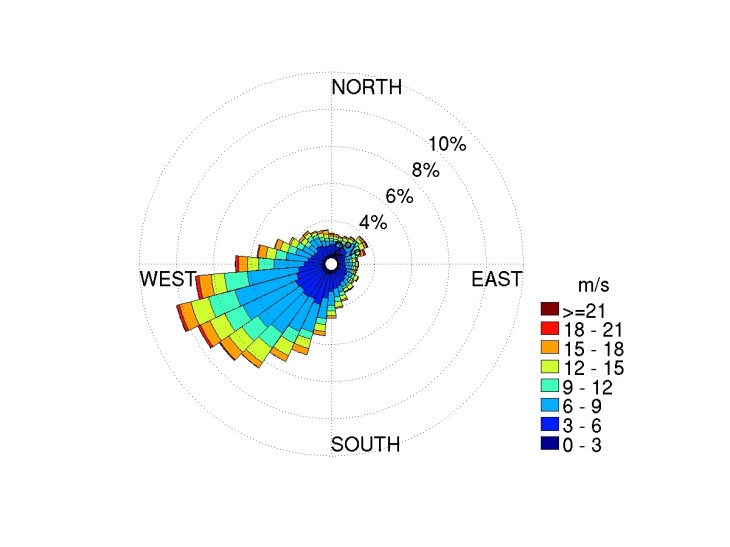
Wind direction (bins) and speed (color) for the winter season (Dec, Jan, Feb) over the Baltic Sea area. Conducted with the reanalysis dataset coastDat2 from 1948 to 2012. (Courtesy of S.Bierstedt)
Influence of large-scale climate variability on upwelling regimes off the Namibian coast: implications for past and future climates

The Namibian Upwelling System is one of the four major Eastern Boundary Upwelling Ecosystems. The climatological upwelling regime is driven by the wind stress field off Southwest Africa, but which factors modulate the upwelling strength at long-term scales is less well known. Large-scale oceanic circulation systems, large-scale atmospheric forcing, changes in the stratification and regional land-sea temperature contrast, which modulates the local wind could affect the upwelling system. At longer time scales, coastal upwelling can influence the thermal land-sea contrast, thus modulating the regional wind regime. Therefore, not only past climates but also future scenarios are of interest.
The research is focused on the causes for long-term variations at decadal and longer time scales of upwelling off the Namibian coast. This will be investigated by statistically analysing a series of observation data sets and climate simulations with atmosphere-only, ocean-only and coupled climate models that cover the present state, the 21st century and the past millennium.
more information
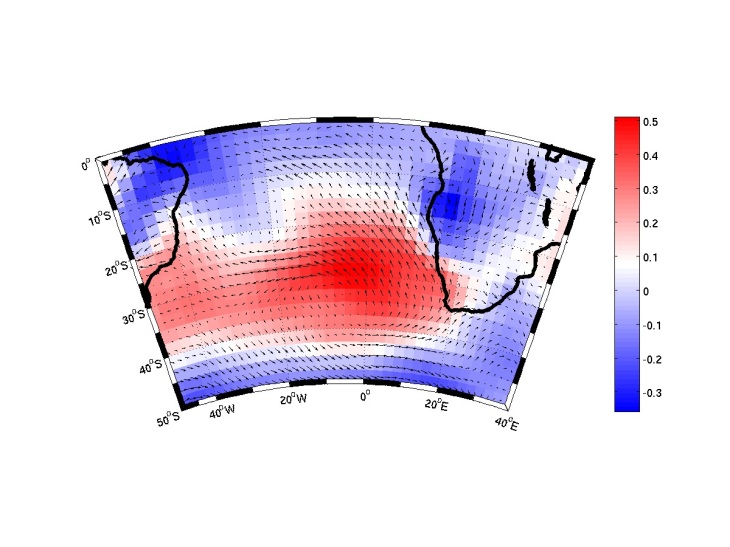
Correlation pattern between upwelling index and sea level
pressure (shaded colours) and upwelling index and wind stress (arrows)
for austral spring (September-November) from 1950 to 2010. (Courtesy of N. Tim)
Impact of large-scale climate variability on coastal upwelling

Coastal upwelling is affected by various atmospheric and oceanic factors. The general aim of this study is to identify the influence of large-scale climate patterns on the dynamics of coastal upwelling and the mechanisms that may give rise to decadal and multi-decadal variability in the western part of the Arabian Sea coastal upwelling system. The assessment will also estimate the magnitude of the low-frequency variations that are linked to internal regional climate dynamics, to the large-scale internal climate variability and to the external climate forcings.
The analysis will first focus on the observational period (mainly 1950-2010) by statistically analyzing selected simulations with ocean-only models driven by atmospheric reanalysis, and ocean reanalysis products. The analysis will be then extended to long multi-century simulations with global ocean-atmosphere coupled models over the last centuries, and its results are planned to be compared to the information provided by available sea-sediment proxy records that may be considered indicators of past up-welling conditions in the last few centuries and millennia.
The findings will be applied to simulations of future climate under different scenarios of atmospheric concentrations of greenhouse gases. For this purpose, simulations from the Climate Model Intercomparison Project that have been used by the IPCC for the latest climate assessment will be applied. The overall conclusions will provide hints about the future behaviour of upwelling and the impact of climate change on upwelling dynamics.
more information
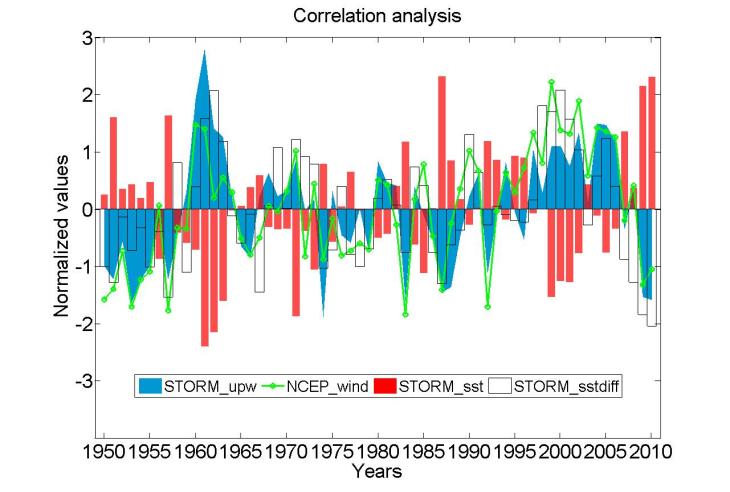
Correlation of upwelling velocity (STORM_upw) with along shore wind stress (NCEP_wind), coastal sst (STORM_sst) and coastal-offshore sst difference (STORM_sstdiff) from 1950 to 2010. The analyses indicate that the upwelling velocity is significantly correlated to wind stress (r=0.85, p<0.00001). At the same time, strong correlations (r=-0.77, p<0.00001) are found between upwelling velocity and sst and between sst difference (r=0.71, p<0.00001). This result confirms that the western Arabian Sea coastal upwelling system is mainly forced by the SW Indian monsoon. Thus, the STORM data seems reliable comparing to upwelling indicators such as wind stress and sst.(Courtesy of X. Yi)
Long-term sea-level variability and change in the Baltic Sea

The main task of the study is the analysis of the long-term dynamics of sea-level variability in the Baltic Sea, including the mutual interaction with the North Sea. The Baltic Sea contains some of the longest sea-level records and is known to be affected by a combination of global, regional and local effects. The most important is the glacial isostatic adjustment which causes a clear north-south gradient in the basin-wide pattern of relative sea-level. Recent studies found that different (atmospheric) driving factors influence the decadal Baltic sea-level variability in a spatially heterogeneous way, especially on the southern Baltic coastline. Within this project we aim at deepening these findings and their physical explanations using sophisticated statistical analysis of the observational record, followed by the application to model simulations. This includes, among others, the analysis of long tide gauge (coastal) station data together with satellite data sets (and comparison with coastal station data in the period of overlap) and available gridded sea level reconstructions, the identification of the locally resolved multi-decadal variability and centennial trends of the rate of sea-level rise and the regionalization of sea-level scenarios. more
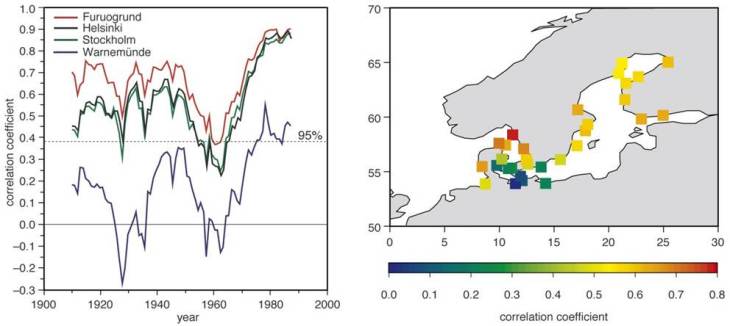
Correlation between the winter mean (December-January-February) of the NAO index and the winter mean (linearly detrended) Baltic Sea level in the period 1900-1998. (adapted from Hünicke and Zorita 2006)
Regional sea level under a changing climate at the retreating coast of Ghana

This project is divided in two phases. In the first phase, the project aims to characterize the large-scale climate forcing that drive mean sea-level variability at and off the coast of Ghana and study its decadal variability and long-term trends in the observational period. The activity in this first phase mainly consists of the statistical analysis of available datasets from tide gauges, satellites, as well as meteorological reanalysis and simulations with ocean and climate models. The main large-scale climate factors driving regional mean sea level at these timescales will be identified and quantified.
In its second phase, the project will focus on the analysis of the evolution of shoreline changes at the entire coast of Ghana and its possible relation to climatic driven changes with emphasis on regional mean sea level variability and change.
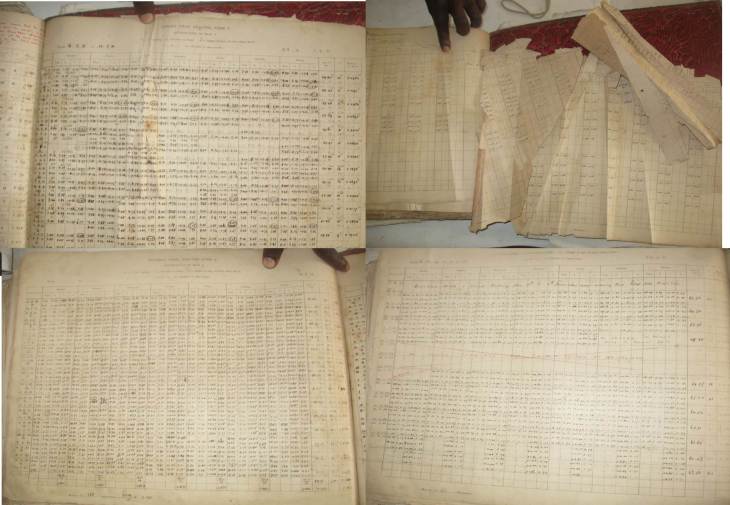
Analogue Sea level data from Ghana Survey Department (Courtesy of P. Evadzi)
